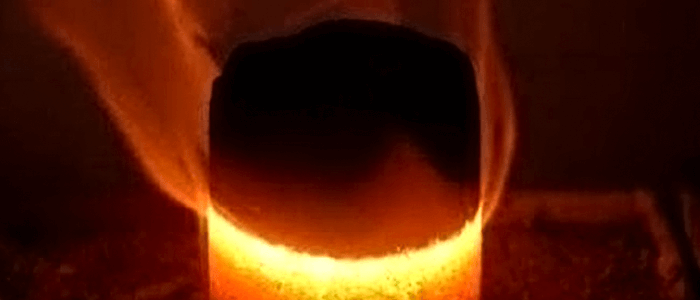In the pursuit of flawless castings, foundries constantly battle against one of the most common defects: shrinkage porosity. While traditional sand risers and insulating sleeves have been the standard for decades, a superior solution exists for demanding applications—the High Exothermic Riser Sleeve.
This article explores how this advanced technology works, its significant benefits, and why it might be the key to optimizing your casting process and improving your bottom line.
What is a High Exothermic Riser Sleeve?
A High Exothermic Riser Sleeve is a precision-engineered foundry consumable that combines exceptional insulation with an intense, self-generated heat source. Unlike passive insulating sleeves that simply slow down cooling, exothermic sleeves actively reheat the molten metal in the riser.
The core technology lies in a thermochemical reaction, typically the aluminothermic reaction, between fine aluminum powder and an oxidizer (like iron oxide). This reaction is summarized by the formula:
2Al + Fe₂O₃ → 2Fe + Al₂O₃ + Intense Heat
When molten metal fills the mold and enters the sleeve, it ignites this exothermic mixture. The reaction releases a massive amount of heat, significantly raising the temperature of the metal in the riser and keeping it liquid far longer than any other method.
Key Advantages and Why They Matter
Superior Feed Metal Efficiency:
This is the most significant advantage. The intense heat creates a pronounced thermal gradient between the casting and the riser, ensuring directional solidification. The riser remains liquid longest, effectively feeding shrinkage throughout the entire solidification process. This virtually eliminates shrinkage cavities and microporosity in the final casting, resulting in denser, more reliable parts.
Dramatic Increase in Yield:
“Yield” refers to the weight of the saleable casting versus the total weight of metal poured. High exothermic sleeves are incredibly efficient, allowing for the use of much smaller risers compared to sand or standard insulating sleeves. This means less metal is wasted in the risers that will be cut off and remelted. Yield improvements of 50% to 70% are common, leading to direct savings on metal costs, energy for remelting, and handling.
Enhanced Casting Quality and Integrity:
By ensuring perfect feeding, these sleeves improve the mechanical properties of castings—especially critical for high-integrity applications like automotive, valve and pump, and heavy machinery components. They are particularly effective for alloys prone to shrinkage issues, such as ductile iron, carbon steel, and low-alloy steels.
Design Flexibility and Efficiency:
Their high efficiency allows engineers to place risers in locations previously considered impractical due to space constraints. This enables more optimized casting design. Furthermore, smaller risers are easier and cheaper to remove, reducing fettling and grinding time.

Types and Applications
High exothermic sleeves come in various configurations to suit different needs:
-
Blind/Top Sleeves: Enclosed on top for maximum thermal efficiency, minimizing heat loss to the environment. This is the most common type.
-
Topless/Open Sleeves: Open at the top, sometimes used for specific applications where ignition or filling needs to be observed.
-
Breaker Core Sleeves: Incorporate a pre-formed ceramic washable core at the neck. This creates a small, predefined break point, making riser removal quick, clean, and precise, further reducing cleaning costs.
Best Practices for Implementation
To maximize the benefits of high exothermic sleeves, consider the following:
-
Correct Sizing: Proper selection based on casting modulus, weight, and alloy is crucial. Oversizing wastes money, while undersizing can lead to feeding failures. Consult with your supplier’s technical team for precise recommendations.
-
Proper Installation: Ensure a tight fit between the sleeve and the mold pattern to prevent metal penetration (“burn-in”) between the sleeve and the mold wall, which can cause knock-off issues.
-
Storage: Store sleeves in a dry, moisture-free environment. Dampness can deactivate the exothermic compounds and cause ignition failures.
High Exothermic vs. Traditional Riser Systems
| Feature | Conventional Sand Riser | Insulating Sleeve | High Exothermic Sleeve |
|---|---|---|---|
| Principle | Passive Cooling | Passive Insulation | Active Heating + Insulation |
| Feeding Efficiency | Low (~10-15%) | Moderate (~25-35%) | Very High (~50-70%) |
| Riser Size Required | Largest | Smaller | Smallest |
| Casting Yield | Lowest | Medium | Highest |
| Ideal For | Non-critical parts | General Purpose | High-Value, Complex Castings |
Conclusion: Is It Right for Your Foundry?
While the initial unit cost of a high exothermic sleeve is higher than that of an insulating sleeve, its ability to dramatically increase yield and improve quality delivers a compelling Return on Investment (ROI). The savings on molten metal often far outweigh the additional material cost.
If you produce high-value castings from alloys susceptible to shrinkage, or if you are looking to maximize efficiency and profitability, high exothermic riser sleeves are an indispensable technology worth serious consideration.
Ready to optimize your casting process? Contact us today to discuss your specific application and discover how our technical expertise and range of exothermic solutions can help you achieve superior results.
Email: info@sf-foundry.com
WhatsApp: +8613785803358


